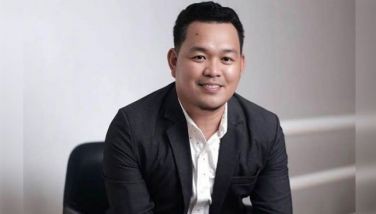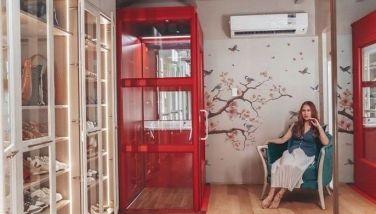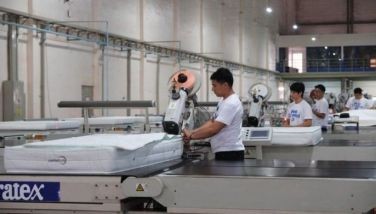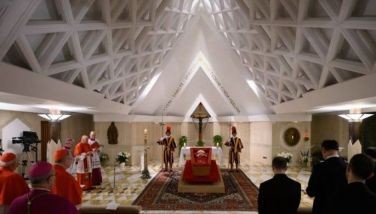A beam of hope
February 20, 2005 | 12:00am
It may be just a tiny structure, but the new one-room school building standing on a hill in remote Sitio Maluan, Marilog District in Davao City will always be "big" to nine-year-old Naning Ansudo.
The little girl could not find the words to express her joy upon seeing the school building. But her tears say it all. Naning is one of the 48 Matigsalog tribe children enrolled in the Early Childhood Education (ece) component of the Basic Education Assistance for Mindanao (beam) Project, which is being funded by a grant from the Australian Agency for International Development (ausaid).
She remembers the times when she could not go to school because getting there was just too difficult, too far, and too dangerous because of floods. "Kadtong 2002, nagabaktas ko padung Sitio Malikungkong aron muskwela. Apan nakaundang ko kaylisod naman ang dalan sa sige ug baha (Last 2002, I was hiking on my way to the school in Sitio Malikung-kong but I had to turn back. The way was too difficult because of the floods)."
Eventually, Naning and most of her schoolmates were forced to stop going to school. Kept at home, she studied by herself and she prayed. She prayed day and night, falling asleep with one simple wish. Today, she wakes up every morning to see the concrete building just a few steps from her home–the fulfillment of her wish. She and the other tribal children are back in school, thanks to beam’s Lumad Integrated Functional Education (life) project.
beam’s learning center provides early childhood learning with para-teacher Rosalina Ardenio, who has volunteered to share her time and effort from morning till afternoon, Mondays to Fridays.
Coming from the Talaandig tribe, Rosalina incorporates the Matigsalog culture in every lesson she teaches to the eager young students. beam, the biggest international donor-funded initiative on basic education in Mindanao, gives emphasis to the preservation of culture, which is applied and followed in the Maluan learning center.
Rosalinda teaches them three language: Matigsalog, Filipino and English. Although she has not finished her high school education, this para-teacher grabs every opportunity to teach her pupils. Showing off their talents, the 48 pupils awed visiting officials during the inauguration of the learning center. Even four-year-old toddlers sang the national anthem very well.
Australian Ambassador to the Philippines Ruth Pearce felt the passion of the school children and their thirst for learning. "I hope to meet any of you here as Philippine Ambassador in the future," she challenged the children, who warmly welcomed her during the inauguration of the Lumad learning center.
The learning center is a structure constructed by beam through the San Pedro College Community Extension (beam’s local service provider) with the assistance of community members and local government officials.
"This structure is expected to change people’s lives," Ambassador Pearce stresses.
Not just targeting the young, the center also teaches tribal adults and out-of-school youths livelihood skills. Parents, who are considered as beam’s major partners, gather every weekend to attend functional literacy sessions, as well as training courses on livelihood skills adapted to their area and culture. Women improve their weaving with the use of indigenous materials.
beam provides the parents with start-up capital as soon as they are ready for business. The project, a major component of Australia’s Development Cooperation Program with the Philippines, aims to uplift the lives of communities with income-generating projects.
The beam project allotted P500,000 for the center, honoraria for the para-teachers, training, livelihood start-up capital, teachers’ and learners’ school supplies, development and reproduction of learning modules, and the construction of the tribal learning center.
The "big" little school in Sitio Maluan is just one of the many target barangays which will receive assistance from beam. Now on Stage 2, beam will operate until 2008, advocating education in every Filipino home, especially in Mindanao.
The little girl could not find the words to express her joy upon seeing the school building. But her tears say it all. Naning is one of the 48 Matigsalog tribe children enrolled in the Early Childhood Education (ece) component of the Basic Education Assistance for Mindanao (beam) Project, which is being funded by a grant from the Australian Agency for International Development (ausaid).
She remembers the times when she could not go to school because getting there was just too difficult, too far, and too dangerous because of floods. "Kadtong 2002, nagabaktas ko padung Sitio Malikungkong aron muskwela. Apan nakaundang ko kaylisod naman ang dalan sa sige ug baha (Last 2002, I was hiking on my way to the school in Sitio Malikung-kong but I had to turn back. The way was too difficult because of the floods)."
Eventually, Naning and most of her schoolmates were forced to stop going to school. Kept at home, she studied by herself and she prayed. She prayed day and night, falling asleep with one simple wish. Today, she wakes up every morning to see the concrete building just a few steps from her home–the fulfillment of her wish. She and the other tribal children are back in school, thanks to beam’s Lumad Integrated Functional Education (life) project.
beam’s learning center provides early childhood learning with para-teacher Rosalina Ardenio, who has volunteered to share her time and effort from morning till afternoon, Mondays to Fridays.
Coming from the Talaandig tribe, Rosalina incorporates the Matigsalog culture in every lesson she teaches to the eager young students. beam, the biggest international donor-funded initiative on basic education in Mindanao, gives emphasis to the preservation of culture, which is applied and followed in the Maluan learning center.
Rosalinda teaches them three language: Matigsalog, Filipino and English. Although she has not finished her high school education, this para-teacher grabs every opportunity to teach her pupils. Showing off their talents, the 48 pupils awed visiting officials during the inauguration of the learning center. Even four-year-old toddlers sang the national anthem very well.
Australian Ambassador to the Philippines Ruth Pearce felt the passion of the school children and their thirst for learning. "I hope to meet any of you here as Philippine Ambassador in the future," she challenged the children, who warmly welcomed her during the inauguration of the Lumad learning center.
The learning center is a structure constructed by beam through the San Pedro College Community Extension (beam’s local service provider) with the assistance of community members and local government officials.
"This structure is expected to change people’s lives," Ambassador Pearce stresses.
Not just targeting the young, the center also teaches tribal adults and out-of-school youths livelihood skills. Parents, who are considered as beam’s major partners, gather every weekend to attend functional literacy sessions, as well as training courses on livelihood skills adapted to their area and culture. Women improve their weaving with the use of indigenous materials.
beam provides the parents with start-up capital as soon as they are ready for business. The project, a major component of Australia’s Development Cooperation Program with the Philippines, aims to uplift the lives of communities with income-generating projects.
The beam project allotted P500,000 for the center, honoraria for the para-teachers, training, livelihood start-up capital, teachers’ and learners’ school supplies, development and reproduction of learning modules, and the construction of the tribal learning center.
The "big" little school in Sitio Maluan is just one of the many target barangays which will receive assistance from beam. Now on Stage 2, beam will operate until 2008, advocating education in every Filipino home, especially in Mindanao.
BrandSpace Articles
<
>
- Latest
- Trending
Trending
Latest
Trending
Latest
Recommended















